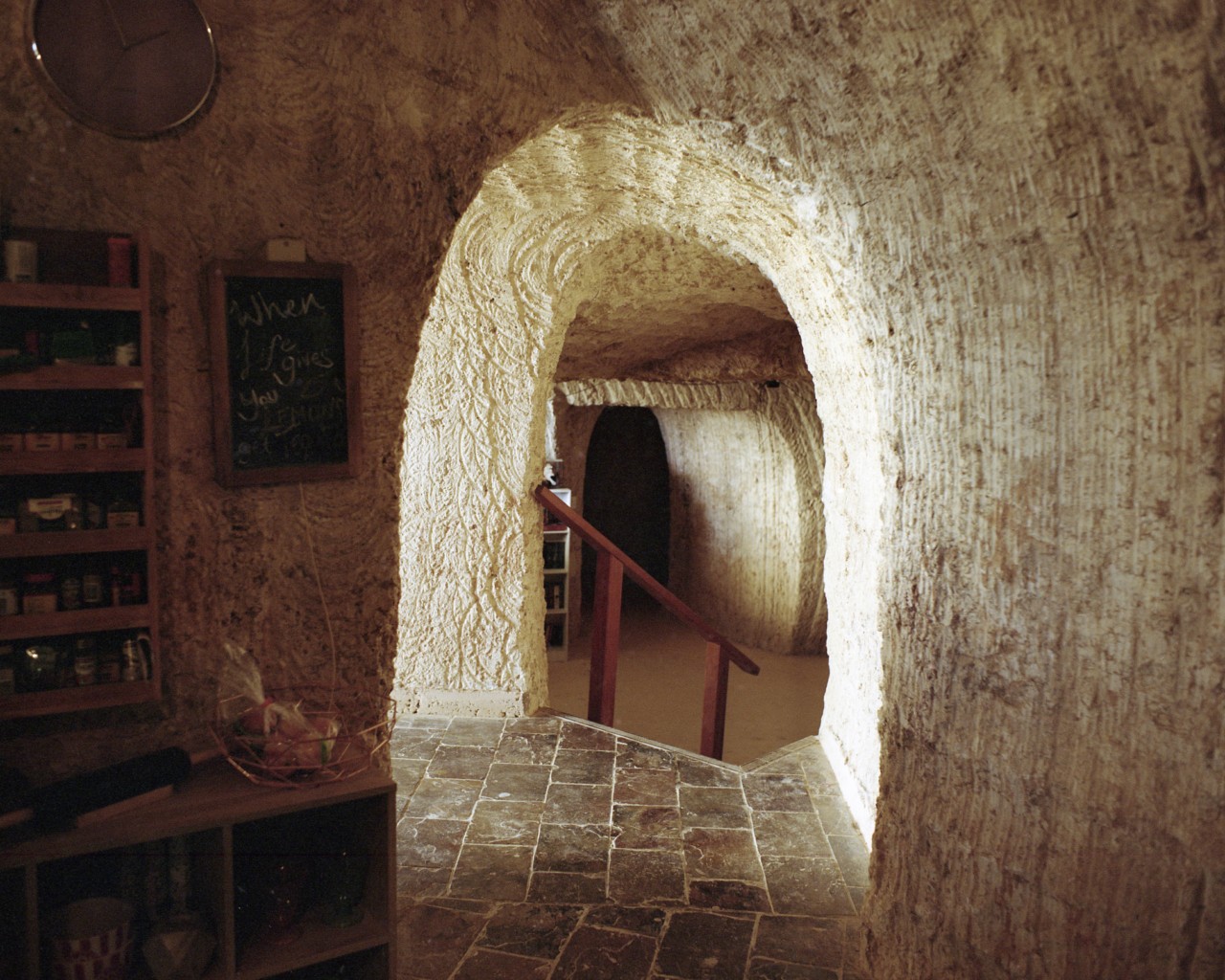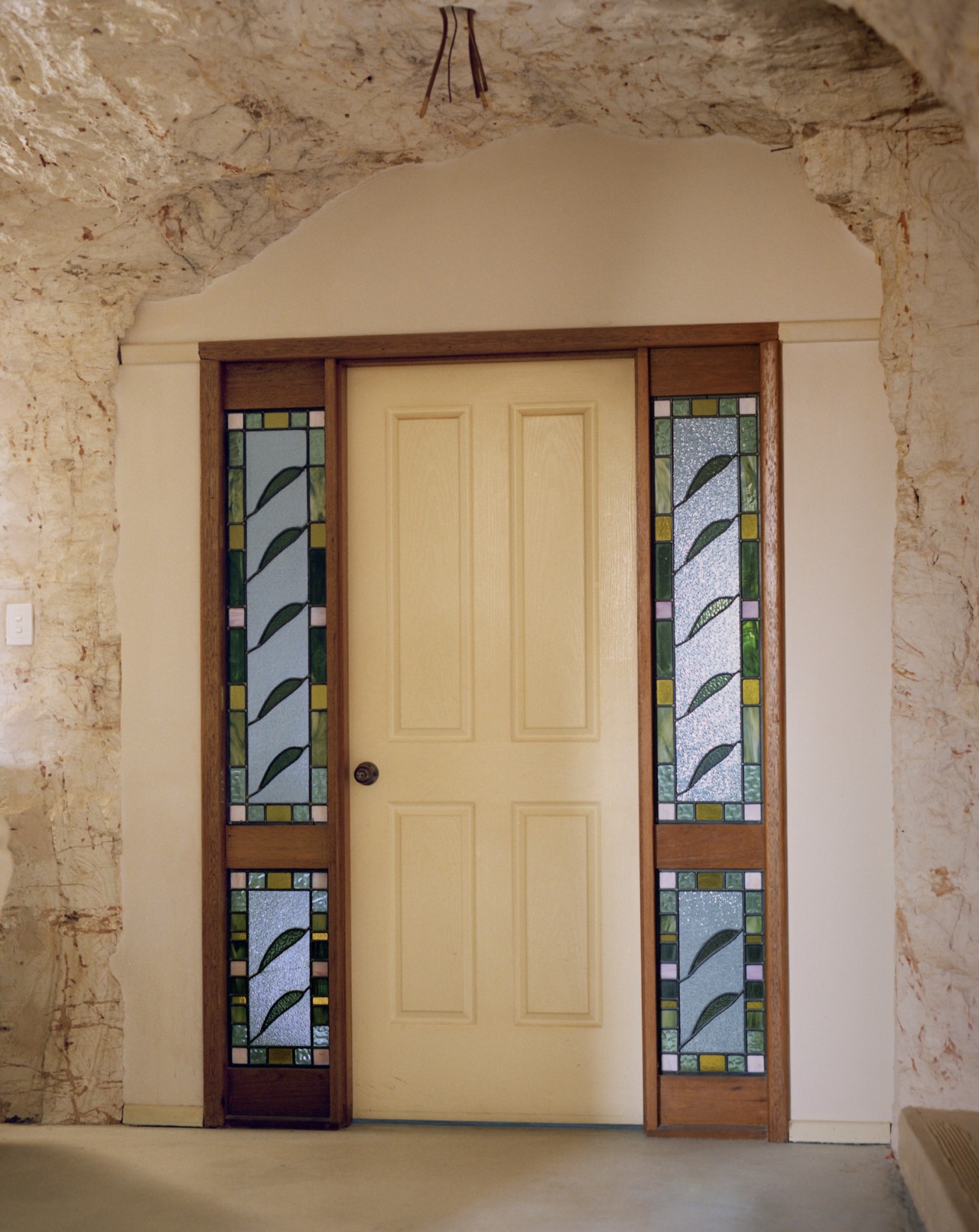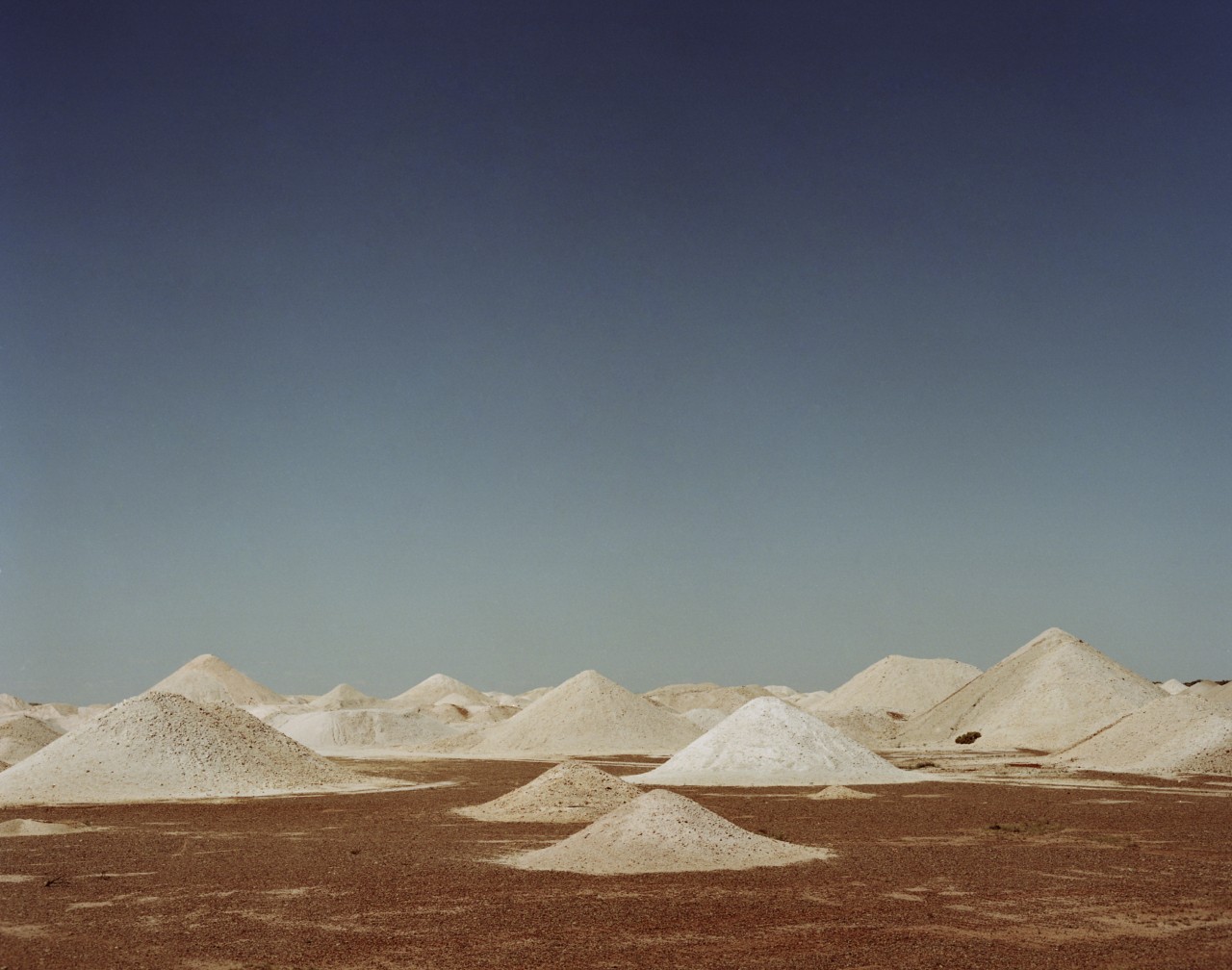

Words by Ruth H. Burns
photographs by alex lockett
As the Earth heats up, some Australians are going underground to survive. But not everyone has that option.
In the remote town of Coober Pedy in South Australia, summer temperatures now regularly soar above 104 degrees Fahrenheit, with days peaking as high as 119 degrees. Climate change has made this extreme heat more frequent and more dangerous. For the town’s wealthier white residents, the solution lies beneath their feet—in “dugouts,” homes carved from the rock of former opal mines where temperatures remain a steady and livable 70 degrees. But for many Aboriginal families, whose ancestors have called the area home for over 50,000 years, the story is far more precarious.
Instead of benefiting from the same cooling solutions, Aboriginal communities endure the brutal heat in poorly built homes that trap the sun’s energy. Around 15% of Coober Pedy’s local population identifies as Aboriginal or Torres Strait Islander, yet a legacy of discriminatory housing policies have failed to provide them with culturally appropriate or climate-adapted housing. For generations, many were forced to live in makeshift tin sheds—crude, uninsulated structures offering little protection from the elements; today, they occupy poorly constructed buildings with cement walls that absorb and radiate heat, turning their homes into ovens.
Meanwhile, Australia—like much of the world—is heating up. An unseasonal autumn heatwave is sweeping across the country, pushing temperatures in parts of southern Australia to levels around 18 degrees Fahrenheit above the April average.
To be sure, climate change is driving these shifts in temperature. Up until the last two centuries, the term referenced long-term shifts in weather patterns and temperatures that happened naturally, in part due to elements like large-scale volcanic eruptions or solar activity. But after the industrial age, the customary nature of climate change shifted entirely. Since then, scientists say, humans are responsible for making planet Earth hotter. Human-driven climate change comes with severe consequences, including more droughts, fires, melting ice caps, alongside rising sea levels that ensue, powerful hurricanes, freshwater scarcity, and mass extinctions.

The Earth’s surface is now about 1.8 degrees warmer than it was in the late 1800s, with the last decade being the hottest on record. While that might sound minor, even small temperature shifts can have a major impact, especially in places like Australia where an already warm climate is facing extreme heat so prevalent it is driving people underground. Last year, Australia experienced one of the largest bushfire seasons in the world, with fires burning an estimated 35.3 million hectares of land roughly the size of Indiana.
Despite being one of the world’s wealthiest nations, Australia’s racial and economic inequalities are stark—particularly when it comes to who can afford to adapt to a rapidly warming world. Nowhere is this new climate reality more extreme, or more telling, than in Coober Pedy. By the end of the decade, the region will likely experience at least 35 days of scorching heat at over 118 degrees every year. And while scientists say ground temperatures have increased by 1.8 degrees, Coober Pedy’s surface is already 5.4 degrees higher than it was a century ago—and it’s expected to warm by more than 7 additional degrees within the next 25 years.
Underground in the “dugouts,” temperatures remain low, as do utility bills and other expenses. Above ground, however, the community’s Indigenous residents are left to their own devices to cool their sweltering homes in the face of unpredictable, often prolonged, periods of extreme heat. With Coober Pedy disconnected from the nation’s energy grid, the cost of air conditioning is prohibitively high—if it’s even available at all.
Human beings aren’t built to survive in sustained heat such as this. It’s become life-threatening, especially for the elderly, for children, and for those with pre-existing health conditions. On the hottest days, many Aboriginal residents have no choice but to seek refuge at the Umoona Tjutagku Health Service: It’s the only accessible place that’s air conditioned. There, they also receive food, water, and essential care.
Coober Peddy is, in many ways, on the frontlines of climate inequality. It’s just one example of how, around the world, marginalized communities—particularly Indigenous and low-income groups—are already suffering the most from the effects of global warming. In response, scientists are calling for urgent public health measures to protect the most vulnerable. Because as temperatures climb, so too does the human cost.
“Despite being one of the world’s wealthiest nations, Australia’s racial and economic inequalities are stark—particularly when it comes to who can afford to adapt to a rapidly warming world.”
Heat is fast emerging as a serious public health crisis. While high blood pressure, poor diet, smoking, and stress are familiar contributors to heart disease, which is cited as Australia’s leading cause of death, researchers are now identifying extreme heat as a major risk factor as well.Without intervention, cardiovascular disease burdens could double as global temperatures continue to rise. For Aboriginal communities already disproportionately exposed to heat, this could mean a sharp surge in heart-related disease and death rates.
While some see underground living as a potential refuge from an increasingly uninhabitable surface—an idea made all the more real by Apple Studios’ popular television show, Silo—the subterranean world is not immune to the effects of climate change. Rising global temperatures are causing soil to swell and heave in some places, and contract and sink in others, actively destabilizing the ground beneath our feet. We know Venice is sinking, but similar shifts are happening across the world. Cities all over the world, including Amsterdam, Istanbul, Nanjing, and Berlin are being affected by underground climate change. In Chicago, even a subsurface temperature rise of just 0.25 degrees has triggered changes significant enough to compromise building foundations, making structures unsteady and unsafe.
Scientists are also beginning to study how climate change affects other species that live under the surface. Long thought to be shielded from environmental extremes, cave-dwelling species may actually be especially vulnerable to even subtle temperature shifts. Like all organisms, they’ve evolved traits enabling them to thrive in their specific environments—but those adapted to the cool, damp, and stable conditions of caves may not tolerate even the slightest rise in heat. For years, the remoteness of these habitats has long limited research, but early signs suggest these hidden ecosystems are far more vulnerable than once believed.
Much like the cave ecosystems that offer a buffer from the surface world, the dugouts that wealthier residents of Coober Pedy have taken refuge in offer temporary relief from the blistering heat above—but they are not a permanent solution. No place on Earth, whether on the surface or beneath it, will remain unaltered by the effects of climate change. Yes, some areas may suffer less than others, but eventually, the impacts will come for us all. There is no place to hide from the damage humanity has wrought. It must be remediated.
As they say: as above, so below.

Australia’s Heat Is Rising. So Is Its Climate Inequality.

